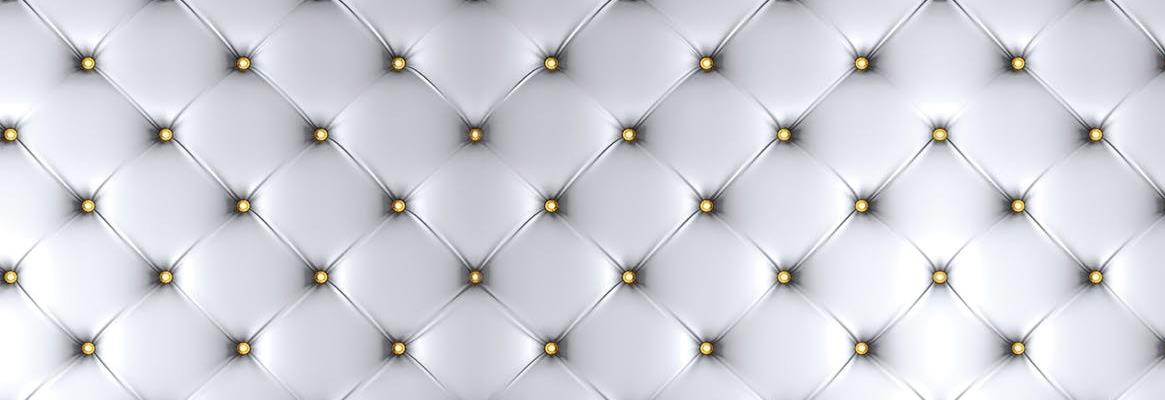Linen is one of the most eco-friendly natural fibres offering diverse applications, says Ashok Athalye.
Linen used to be the most widely used textile material for apparels during the primordial era. Owing to its strength, durability and long-lasting property, the ancient Egyptians were considered using it even as a currency. Thus, linen was an intrinsic and intimate component of human life and it was valued so much that cleaning of household cloths in public place probably led to the popular usage 'washing dirty linen'.
Linen, which ruled the northern hemisphere garb for thousands of years, lost its importance in the last few centuries as another natural fibre cotton, also initially marketed as white gold, gained prominence during British colonisation of Asia and the advent of industrialisation. Availability of vast land mass for cultivation of cotton in the Indian sub-continent, tropical weather conditions, cheap labour and ease of downstream processing boosted popularity of cotton and it became the most popular textile substrate around the globe within a short period.
Linen, which enjoyed a lion's share among the natural farm-cultivated textile substrates until the 17th century, was reduced to hardly 1 per cent of total textile fibre consumption by the mid-19th century. However, the last few decades have witnessed revival of linen and usage of this long and thick fibre in apparel and home furnishing segment.
Linen is best grown in cold and moist climatic conditions and Western European weather is considered the most conducive for the best quality linen. France, Belgium, the Netherlands and other neighboring countries contribute about 80 per cent of global linen fibre production of about 1,500,000 metric tonnes (MT), while the remaining comes mostly from Egypt, Russia and China. Though, linen fibre cultivation is less in China, it has the highest linen yarn spinning capacity, amounting to almost 80 per cent of global production.
The United States is the largest consumer of linen-made textile material worldwide, followed by Europe and India. However, their consumption pattern is different. In the United States and Europe, about 30 per cent of linen is used in clothing and the rest in home furnishing, while in India it is exactly the reverse. India is considered to be one of the fastest growing market for linen and blended textile material and about 30,000 MT was consumed last year and is believed to be growing at a compound annual growth rate (CAGR) of about 15 per cent in the last decade. Linen's ability to absorb sweat and keep the body cool makes it a perfect fabric for India.
Further, with growing awareness about sustainability and various aspects of a textile material in terms of its environment impact, water footprint, biodegradability and longevity, the focus is shifting to linen as it is one of the most eco-friendly natural fibres.
Cotton and linen are both natural fibres of cellulosic origin containing anhydroglucose units, but there are a lot of differences between them in terms of physical, environmental and usage performance. Apart from the use of linen fibre in textile application, its other parts are also used as varnish for wood preservation and linseed oil, the omega-3 fatty acid extract from its seed, as a nutrient for animals.
Linen has many advantages over cotton and other natural fibres as it
- gains strength when wet and is the strongest among all natural fibres
- provides natural drape due to crispy appearance
- retains shape, does not shrink or stretch owing to non-elastic behaviour
- becomes soft and supple after washing
- requires less quantity or thread count due to longer length and high fibre thickness
- appears pleasant due to inherent lustre and texture
- wrinkles easily but becomes smoother through handling and use
- absorbs up to 20 per cent moisture before it begins to feel damp
- enhances wicking property owing to hollow fibre interior
- prevents bacterial growth making it ideal for towels, bed spreads, upholstery, curtains
- retains heat and cold from human body due to insulating property
- keeps cool in summer and traps warmth in winter
- resists static electricity and avoids danger of static shock during wear
- alleviates arthritis and dermatitis due to hypo-allergenic power
- induces better sleep due to anti-stress property
- enhances usage comfort due to air permeability and breathability
- needs less water, fertilisers and insecticides during farm cultivation
- resists dirt and stains and hence, easy to wash
- retains physical appearance due to non-pilling tendency and no lint formation
- enhances aesthetic appeal due to presence of slobs or small knots in the yarn
- resists harmful electromagnetic radiation from sunlight
Now let us know about flax farming, fibre extraction, yarn preparation, mechanical operation, machinery involved, wet processing methods and the end use applications.
Cultivation: Linen fibre is extracted from flax plant (Latin name linum). The plant grows about a meter within 100 days from sowing to harvesting. A variety of seeds are used for plant breeding based on fibre content, weather tolerance, crop protection and weed control behaviour.
Traditional harvesting is usually done by plucking the flax plants, tying them in bundles and allowing them to rot in the field to achieve decomposition of stalk and easy separation of fibre. This process is called retting and it helps remove gummy substances from the bast fibres.
Retting can also be done by other methods:
Pond retting: Leaving the flax plant stalks in tanks of water; it takes about two to four weeks.
Stream retting: Plants are immersed in slow moving streams; the quality of fibre separation is better than pond retting.
Chemical retting: Involves immersion of the dried plants in a tank in acidic or alkaline solution. Though this process is comparatively economical and saves time, it tends to affect the colour and strength of the fibre if not controlled adequately.
Enzymatic retting: The fastest and costliest process that makes use of pectinolytic enzymes for loosening fibres within a few hours.
Dew retting: Widely used, highly stainable but a slow process; the stalks are left in the field for about six weeks, considered to provide best results.
After retting, the stalks are 'scotched' to remove woody matter by crushing them between two metal rollers. Then they are heckled and combed to separate the short fibres. The short fibres are collected for making coarser sturdy goods for upholstery usage while the remaining long and fine fibres are used for making apparel clothing. The fibres vary in length from about 25 to 150 mm and 12-16 micrometers in diameter. The long fibres are then processed using a 'wet spinning' technique, while the short fibres are spun using a 'dry spinning' one.
The long linen fibres are put through machines called spreaders, which combine fibres of the same length and laying them parallel for creating a sliver. Then it is passed through a set of rollers to make a roving. The rovings are drawn out into thread and ultimately wound on bobbins or spools. The yarn is knitted or woven into fabric as 100 per cent linen or in blends with other substrates as per the end use requirement.
Chemical composition: The stem of flax is made up of five layers - epidermis, cortex, bast, cambium and woody tissues. The outer layer is covered with a thin layer of wax during plant growth. The cortex contains pectin and natural colouring components that impart hues varying from grey to light brown. Linen fibre contains only about 70 per cent cellulose while the remaining content comprises hemicellulose, lignin, wax and woody matter spirit. Hence, the conventional alkaline scouring and oxidative bleaching results in about 25-30 per cent weight loss and adversely affects the strength of the yarn.
Wet processing: Linen fibre is processed in many of its forms like rove yarn, packaged bobbins, knitted material or woven fabric depending on the substrate, machinery available and the subsequent processing steps. The pre-treatment is carried out depending on the requirement of whiteness for full white or for bright light or pastel shades, semi bleach (three-fourths white) or partial bleach (half white) by a multi-step scour bleach process.
Demineralisation is carried out first to get rid of heavy metal ion contamination from the fibre and to help achieve improved whiteness and minimum yarn strength damage. Oxidative bleach with sodium chlorite is considered to offer the best results. However, due to environmental concerns, non-chlorine bleach like hydrogen peroxide or peracetic acid is preferred. Further, it is considered that a final treatment with reductive bleaching agent helps improve whiteness. In practice, it is desired to minimise and control weight loss during the pre-treatment process to about 10-12 per cent from cost as well as yarn strength retention point.
Given below is a guideline for the pre-treatment process based on widely-used industrial practice:
Step 1: Demineralisation- 30 minutes at 60oC
0.5-1.0 g/l RUCOGEN WBL (non-ionic wetting agent)
2.0-2.5 g/l VEROLAN NBX (acid demineralizer)
Step 2: Scouring - 30 minutes at 95oC
5.0 ml/l Caustic Soda (50per cent)
10.0 g/l Soda ash (Na2CO3)
2.0g/l VEROLAN NBO (sequestering |dispersing agent)
Step 3: Peroxide Bleaching: 60 minutes at 95oC
1.0-2.0 g/l RUCOGEN WBL
1.5-2.0 g/l RUCO-STAB OKM (Peroxide Stabiliser)
10.0 g/l Soda ash (Na2CO3)
10.0 ml/l Hydrogen peroxide (50 per cent)
Step 4: Peroxide bleaching: 60 minutes at 95oC
1.0-2.0 g/l RUCOGEN WBL
1.5-2.0 g/l RUCO-STAB OKM
6.0 g/l Soda ash (Na2CO3)
10.0 ml/l Hydrogen Peroxide (50per cent)
Step 5: Reductive bleaching | Peroxide neutralization: 20 min at 80oC
1.0-2.0 g/l RUCORIT INPK (Reductive bleaching agent)
Step 6: Neutralisation and pH control: 20 min 45oC
1.0-2.0g/l RUCO-ACID ABS 200
Dyeing: Being a cellulosic fibre, linen can be dyed with a range of dyestuffs like direct, reactive, sulphur and vat. Considering the brilliancy of shade and fastness properties, reactive and vat dyes are the most preferred. Depending on the substrate form and the machinery used, linen can be dyed by exhaust, semi continuous cold pad batch (CPB) and continuous pad-dry-pad-steam (PDPS) and pad-dry-cure methods.
Considering the basic requirement of dye diffusion and uniform level dyeing, the high exhaust, high energy specialty bis-monochlorotriasine-based reactive dyes like TulactivXle are most popular for exhaust application while TulactivC dyes for CPB and PDPS applications.
Linen is known for its long-lasting durability, and therefore for high-end apparel clothing, it is desired that the colour should also last till the fibre lasts. In this aspect vat dyes are highly recommended because of their excellent light, wash fastness properties. Novatic MD, a micro disperse variety, is widely used for both exhaust as well as continuous application and TulaconC, a liquid variety, is preferred for dyeing of light pastel shades in one step pad-dry-cure process.
Conclusion: Based on various ecological and superior performance criteria, linen is regaining its lost position. It is used in apparel as well as various home furnishing items like bed spreads, towels, curtains and table cloth. The fashion-savvy young generation has realised benefits of linen in terms of wearing comfort in any kind of weather and varying climatic conditions, durability and sustainability. Linen is one of the most biodegradable and stylish fabrics in fashion history.
About the author: Ashok Athalye is from the technical service, Atul Ltd, Colors Business, based in Valsad, Gujarat.
References
1. M A Hann; Innovations in Linen Research, March 2005
2. K.K Goswami; A K Mukherjee; Indian Journal of Fibresand Textile Research, Vol 18, pp 82-86, June 1993
3. N Sokmen; MO Aktas; Asian Journal of Chemistry; Vol 25, No (7), 2013











Comments